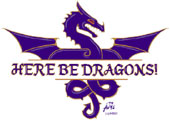

 |
 |
|
|
Komodo Dragon - Life Cycle
Life Cycle
Baby dragons
The eggs are laid in depressions dug on hill slopes or pilfered nests of the orange-legged scrub fowl. This bird is about the size of a chicken, and instead of sitting on the eggs to incubate them, it lays them in mounds of rotting vegetation. As the vegetation rots, it creates warmth, which incubates the egg. The Komodo dragon lays its eggs much deeper than the bird does, about 1.5-1.65m from the surface. This is because the temperature needed by the Komodo dragon eggs is lower than that required by the birds. Old, disused nests are preferred, as they no longer generate internal heat.
Little Komodos
Social KomodoKomodo dragons are solitary animals, although they often congregate at large kills. They either have a fixed home range or are wanderers. Komodos start life as wanderers until they find a home range although some may remain as wanderers. The size of the animal's home range depends mostly on food availability and may be up to 500ha. Territories of dragons may overlap each other. A dragon may travel anywhere from 1.8 - 10km a day in search of food, as well as other Komodos. When the dragons do meet, like around carcasses, social order is quickly established. Chemical signals probably allow individual animals to recognize each other. Visual signals are used around kills. Smaller dragons signal submission by pacing in a circle in a stately ritualized walk with their tails straight out, throwing their bodies side to side in exaggerated convulsions. If the presence of a larger dragon itself does not intimidate, it adopts a threat posture. As it hisses, it lowers its head holding it at an angle, arching and enlarging the neck, and arching the back and tail. It moves in a slow and stiff legged way. If all this doesn't work, it lashes out with its tail. Attacks can lead to serious wounds or death. Dragons are protected by thick, chain-mail like skin.
Back: Komodo Dragon
Source of Information Images starting with Otto are Copyrighted by Otto de Voogd. What did you think about the Komodo Dragon?
|
|
|
If you enjoyed information on our Draconian site, please link to us.
|